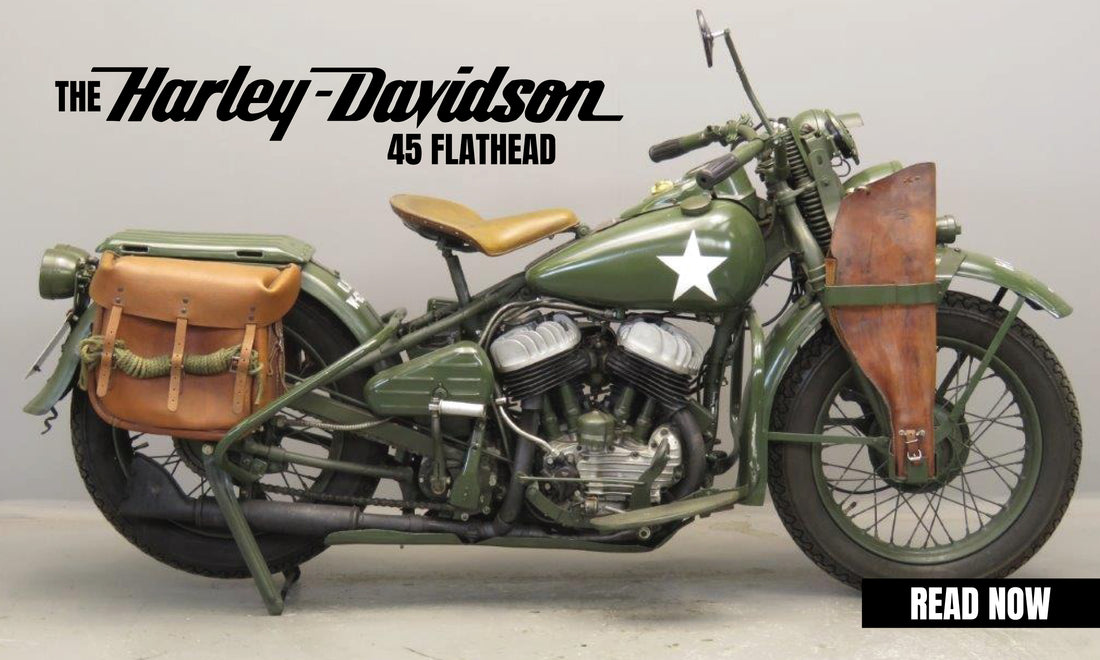When designing a motorcycle engine, staying the course at the right time can set the tone for engineering and usefulness for decades. In the case of Harley-Davidson, the 45 Flathead helped get them through a tough era in American history. Introduced in 1929 as the Great Depression financially crippled many lower- and middle-class Americans, the Flathead sold, and did well, with a few iterations. Production on this engine ran through 1973, even making its way into Harley’s Servi-Cars in 1973.

Development and history
Harley-Davidson faced some headwinds in the lead up to the Great Depression. Their older engines weren't competitive with the modern motors being produced by Excelsior and Indian at the time. Overhead valve engines were being engineered and built into some of the highest-end vehicles in the world. With a price increase in the metal needed to build an OHV engine, and many Americans not having the cash to buy one, Harley chose to stick with the side valve engine because it proved more reliable than a newer OHV motorcycle engine — and was much cheaper to build. These served the need during the Great Depression for cheap, reliable transportation for people no longer able to afford a larger car.

Given its price and reliability, the Flathead 45 would become the motorcycle engine known for World War II. After World War II, there were a large number of surplus motorcycles available for sale to the general public as the US entered peacetime, and the Harley 45 Flathead became the source for the first American choppers.
The 45 Flathead was the longest running production engine in Harley Davidson history until it was finally beaten in 1988 by the Sportster. A run of 41 years is a good, long time for an engine and the Flathead is a good example of a lower-cost, durable engine that is worth its weight no matter the economic or political times.

The engine
One of the most notable parts of the Harley 45 Flathead isn't how it changed the motorcycle industry. The 45 relied on what amounted to “older” technology, but which served the military and the average person just fine. Coming in at 742cc, the 45 Flathead wasn't too powerful, but it was a practical bike that helped transport soldiers and people from point A to point B.
The Flathead is also well known for being easy to work on. With a handful of exceptions, it was easy to find parts for a Flathead because the engine simply didn't change much.

Design wise, the Flathead was simple. The valves were located in the engine block instead of in the cylinder head, unlike the engineering of some up-and-coming engines at the time. This made it easier to manufacture.
The Flathead 45 engine was used extensively during World War II which meant it had to be reliable and easy to maintain and run. Even a poorly tuned Flathead could still run. They admittedly had some issues with dumping oil – but it's way easier to tell you have an oil issue when it ends up on your garage floor instead of in a plume of smoke behind the rider.

Impact on motorcycle culture
As an engine that was widely deployed throughout Harley-Davidson's well-known lineup, the 45 Flathead became one of the sources for the chopper movement. Choppers needed to be simple and didn't necessarily require all that much speed. While Indian and others developed OHV engines, they didn't work that well with the lower quality fuel of the era. The Flathead was the right mix of inexpensive, durable, and not overly powerful in a time when the American highway system was in its infancy and a lack of paved roads also meant that there wasn’t great need for speed. This was just fine for the mechanically easy, efficient, not especially fast engine.

The success of the Flathead also led to the development of more powerful side valve motorcycle engines. In a time when OHV development was leading to faster — and more expensive — speeds, Harley Davidson used the ideas from the 45 Flathead to pursue development all the way up to an 80cc flathead in later decades.
Given its long production period and later engineering, the Flathead was among Harley-Davidson’s best-selling engines ever. This is the natural part of being the right engine at the right time.

